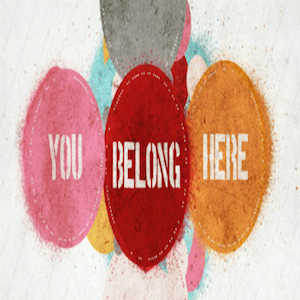‘Invisible threads are the strongest ties’
– Friedrich Nietzsche
We are all hard wired to want to connect and belong: To people, places, what we do and ways of life. Whilst there might be times that we don’t want to connect or belong to certain groups or people, none of us actively seek out disconnection or isolation as a way of living. Why? Because ultimately we want to be a part of something bigger than ourselves. Something that allows us to create and contribute meaning, purpose, opportunity and value.
Not belonging or knowing where we belong is a terrible feeling. It feels awkward, it hurts and can be both alienating and self limiting. Yet invariably at some point in our lives and careers we will all be faced with a crossroads of having to identify where we best belong and naturally connect in a way that allows us to fully contribute our knowledge, skills and talents. Sometimes we outgrow people, places and situations and sometimes they outgrow us. This can be tricky and hard to navigate. In our careers this often presents when we have maximized our opportunity or through redundancies, restructures and relocations.
At a time when businesses and individuals are being challenged to operate in ever changing environments and to innovate and collaborate outside of known networks, this sense of belonging has never been more important. For it is when we feel as though we belong that we feel safe in stepping outside of our comfort zone and taking on new challenges.
There is a big difference though between belonging and fitting in. Brene Brown, author and researcher describes the difference between the two as freedom. ‘Fitting in’ she notes, is our ability to assess a situation and adapt who we are – personality and behaviours – in order to feel accepted. ‘Belonging’ is about freedom – freedom from having to change in order to be accepted and valued and respected for being who you are.
In her research she asked a group of students to describe the difference and their answers were insightful:
- Belonging is being somewhere you want to be and they want you. Fitting in is being somewhere you really want to be and they don’t care one way or another.
- Belonging is being accepted for you. Fitting in is being accepted for being like everyone else.
- I get to be me if I belong. I have to be like you to fit in.
Great leaders know the difference. They also recognize the subsequent challenge. Whilst it’s much easier to tell people they need to adapt in order to fit in with an organizational culture, they look for ways to help people bring their individual strengths and styles and look for ways to contribute to creating a diverse culture. This is not to suggest that we should create a culture of ‘anything goes’ but rather one where people have the opportunity to truly shine by owning what they do. It is about making sure that when we look for people and skill sets we make sure that we give them the freedom to bring themselves and their talents to the ‘table’.
So how do effective leaders create a sense of belonging? I would encourage you to consider the following 6 actions and how you might include them in your leadership repertoire:
Give Trust: Successful leaders understand that to gain trust you must also give it. Without both, true success cannot be achieved. They are able to know who they can trust, with what and when.
Cultivate responsibility and ownership: We all feel a stronger sense of connection and belonging to something when we know what we own and are responsible for. When we feel as though we belong to a team and organization it becomes ‘our team and organization’.
Listen: We all like to be heard. Great leaders seek feedback, listen and are highly responsive to what is appropriate and needed. Individuals understand that what they say matters and take accountability for their opinions, words and actions.
Educate on ‘the why’: We all like to understand how our work contributes to the broader picture and why it is so important. Great leaders help their people understand why what they do holds such value and how it contributes to team and organisational success.
Encourage diversity: Leaders who know how to leverage the individual strengths and capabilities of their team not only create opportunities for their people but also contribute to their overall success. Encouraging individuals to leverage not only their strengths but also their differences helps people understand how what they do matters.
Foster growth: Whilst great leaders accept their people for who they are, they also see their potential and help them grow and learn to become the best version of themselves.
As always I would love to hear your thoughts.
Margot


